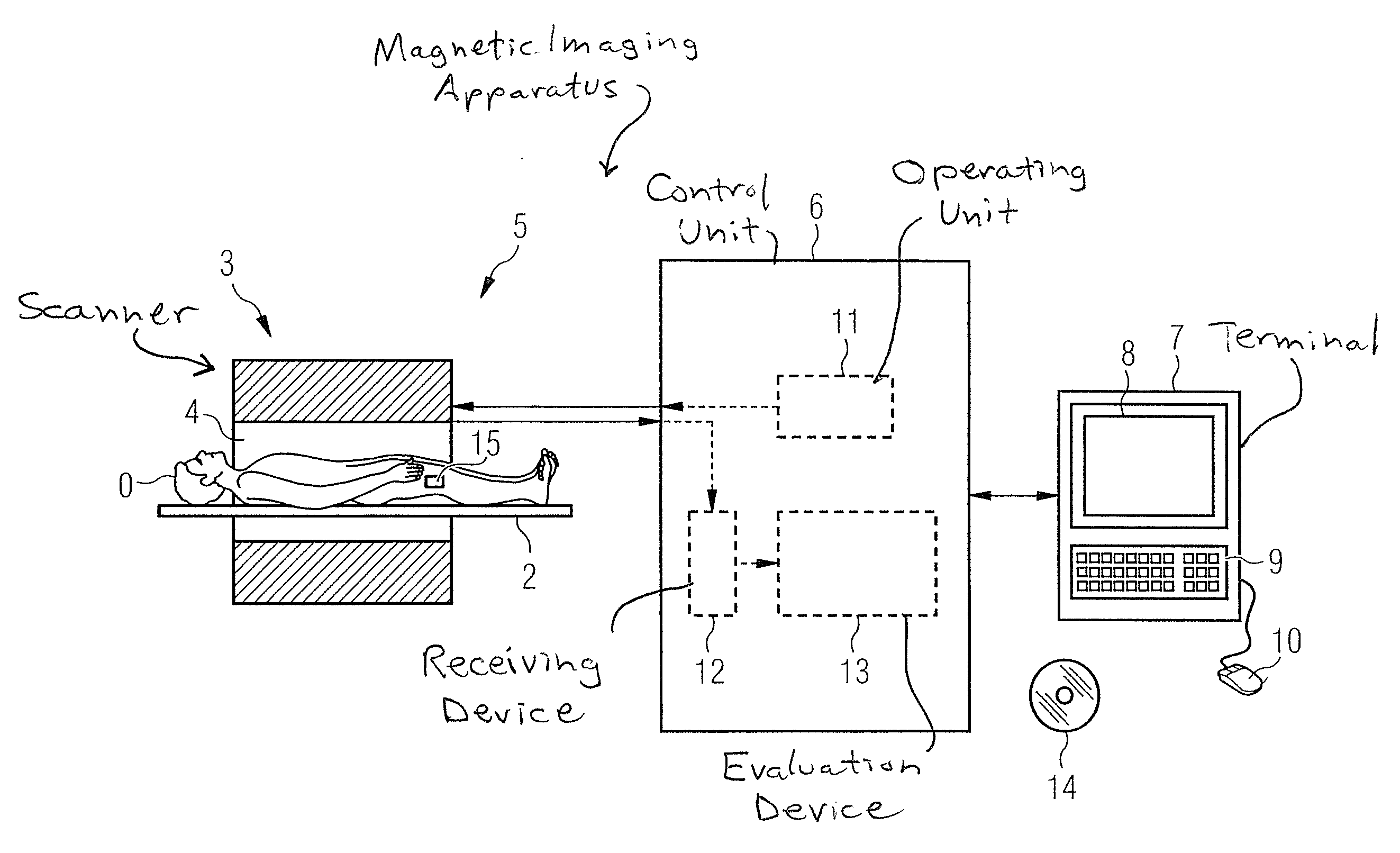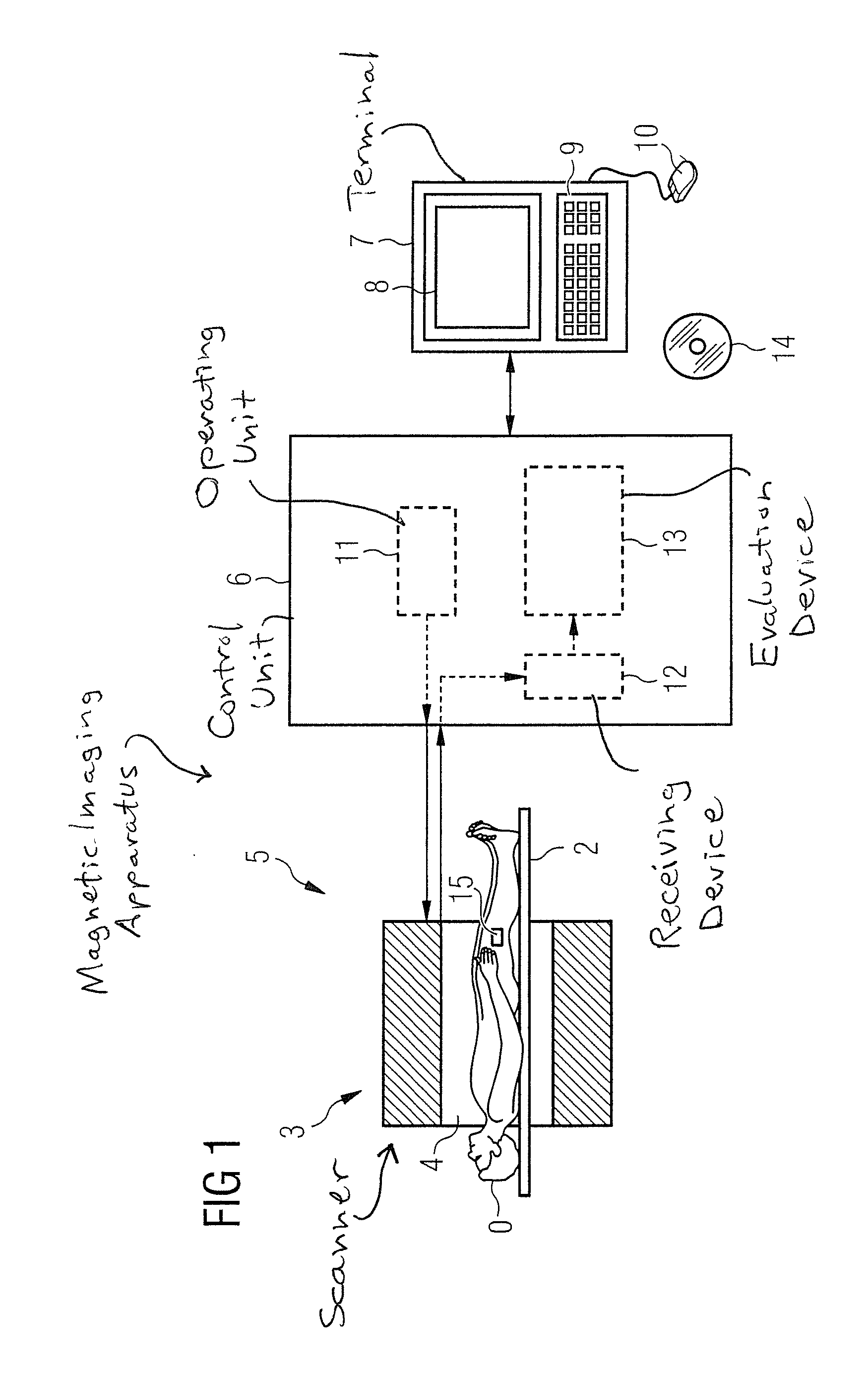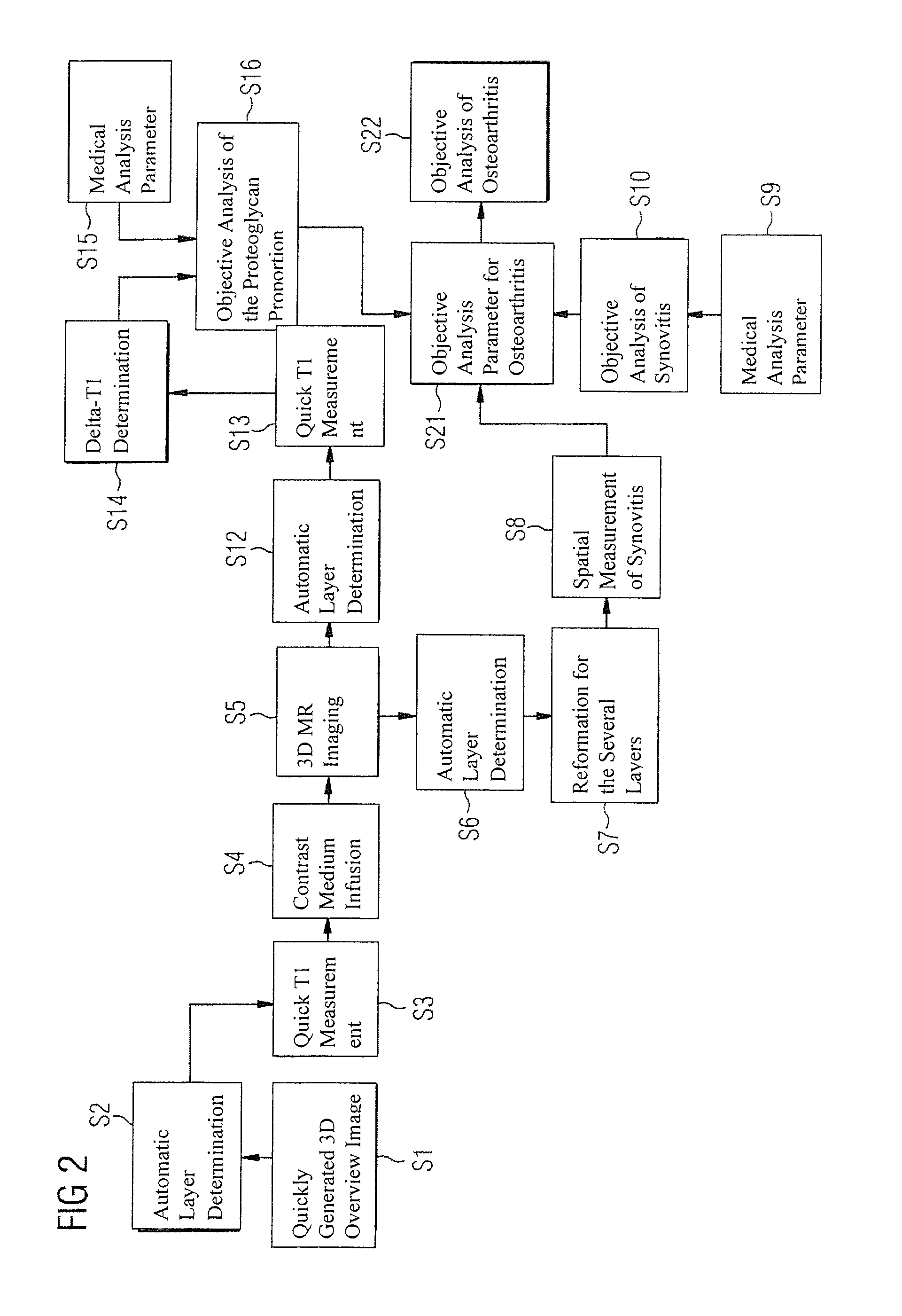Magnetic resonance method and apparatus for automated analysis of joint inflammation, joint proteoglycan proportion, and joint osteoarthritis
a magnetic resonance and automated analysis technology, applied in the field of magnetic resonance, can solve the problems of inability to provide reproducible, inability to perform reproducible classification or analysis of osteoarthritis, and inability to provide such reproducible analysis or quantification of osteoarthritis in an mr
- Summary
- Abstract
- Description
- Claims
- Application Information
AI Technical Summary
Benefits of technology
Problems solved by technology
Method used
Image
Examples
Embodiment Construction
[0052]FIG. 1 shows an inventive magnetic resonance imaging apparatus 5. Basically, the magnetic resonance imaging apparatus 5 includes a scanner 3 that generates, in an examination region 4, the magnetic field required for the MR examination, a table 2, a control unit 6 that controls the scanner 3 and records MR data from the scanner 3, and a terminal 7 connected to the control unit 6.
[0053]The control unit 6, in turn, includes an operating unit (controller or sequencer) 11, a receiving device 12 and an evaluation device 13. During an MR examination, MR data are acquired from the receiving device 12 by means of the scanner 3. In the process, the operating unit 11 controls the scanner 3 to acquire MR data acquired from a volume 15 inside the body of a patient 0 lying on the table 2.
[0054]The evaluation device 13 processes the MR data so as to be presented graphically on the monitor 8 of the terminal 7 with the analyses generated according to the invention being included in the graphi...
PUM
 Login to View More
Login to View More Abstract
Description
Claims
Application Information
 Login to View More
Login to View More - R&D
- Intellectual Property
- Life Sciences
- Materials
- Tech Scout
- Unparalleled Data Quality
- Higher Quality Content
- 60% Fewer Hallucinations
Browse by: Latest US Patents, China's latest patents, Technical Efficacy Thesaurus, Application Domain, Technology Topic, Popular Technical Reports.
© 2025 PatSnap. All rights reserved.Legal|Privacy policy|Modern Slavery Act Transparency Statement|Sitemap|About US| Contact US: help@patsnap.com



